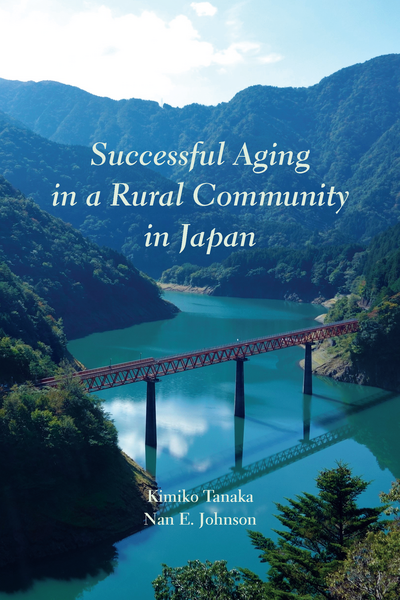Successful Aging in a Rural Community in Japan
by Kimiko Tanaka, Nan E. Johnson
2021
Tags: Anthropology; Ethnographic Studies in Medical Anthropology Series; and Medical Anthropology
190 pp $30.00
ISBN 978-1-5310-1861-0
eISBN 978-1-5310-1862-7
This book provides the important insight that words such as "rural" and "depopulation" do not simply equate with negative outcomes for the elderly. Previous studies in the U.S. pointed out that negative health outcomes for the elderly living in rural areas are due to low socioeconomic status, poverty, and lack of access to better health care. This book will provide the perspective that the quality of community may be a crucial factor that could buffer the negative effects of rurality on the well-being of the elderly.
Kawanehonchō, located in Shizuoka Prefecture, is an important case of local governance supporting the elderly with active participation of local residents. The government considered this town to be endangered based on its significant population decrease and aging. Depopulation is often labeled as inconvenient, problematic, or deserted; Kawanehonchō is in a remote location where 90% of the land is covered by forests. There are no advanced hospitals or large corporations that benefit workers with high salaries and benefits.
No one would expect that Kawanehonchō is producing one of the longest healthy life expectancies in Japan and in the world. Kawanehonchō's community highlights the importance of the quality of community and social ties in achieving healthy aging regardless of socioeconomic status, geographical inconvenience, or lack of advanced medical technology.
Click here to listen to the authors discuss their book on the New Books Network podcast.
Editorial Reviews
This study draws on a wealth of participant observation, interviews, and mixed methods that afford detailed insights into the daily lives in a rural community. Successful Aging in a Rural Community in Japan is an important addition to several recent research works on the theme of rurality in Japan . . . Tanaka and Johnson's study affords important insights into rural issues due to its methodological variety; it draws on pertinent quantitative data as well as qualitative research to introduce the reader to the multifaceted issues faced by rural residents. . . . this book will be of interest to both undergraduate and graduate students in Japan studies, area studies, and sociology as well as to academics and members of the general public."—
Comp Copy If you are a professor teaching in this field you may request a complimentary copy.


